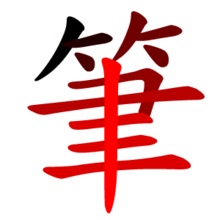 Japanese
Hiragana Katakana Kanji Japanese
Hiragana Katakana Kanji
Japanese language learning
information including:
Hiragana -
pronunciation and writing
Katakana -
pronunciation and writing
Kanji - grades 1-6
(教育漢字 Kyōiku kanji)
Vocabulary -
nouns, verbs, adverbs, and adjectives |
|
|
|
|
| |
 Japanese Language Japanese Language
These pages explain the Japanese language
in the simplest possible terms. After graduating from San Diego
State University with a business degree, and after retiring
from real estate appraising at age 40, I returned to college
and obtained an associates degree in Japanese studies. I was
really fascinated with the Japanese writing system and made
hundreds of pages of vocabulary and thousands of graphics of
Japanese kana and kanji. I transferred all of this from my
JapaneseLanguageCultureFood.com site to this site. I am
beginning to study the language again and I am hoping my
kids will use these pages for their study as well.
A little background about the language.
Japanese is spoken by an estimated 130 million people worldwide and
is the primary language spoken in Japan. In fact, Japan is the only
country where Japanese is the primary language.
Learning to speak Japanese is much easier than what you’ve probably
been led to believe. The writing system, well that’s another story.
The Japanese writing system can take awhile to learn but it can also
be a lot of fun. If you're a beginner, you'll need to learn romaji
before taking on Japanese kana scripts or kanji. You'll probably find
that learning kanji can be pretty addicting. The characters
represent things found in nature and abstract concepts. As you
continue to study them, you'll eventually see patterns
and want to learn as many as you can.
Please note: many of the
Japanese language pages say the following:
"Click the writing practice application link on either
sidebar if you want to try writing this kanji character
online". The application was not working anymore and
has yet to be
removed from the pages.
I recommend taking the following steps if you want to learn
Japanese. |
|
|
 Japanese speaking Japanese speaking
Learning to speak Japanese is much easier than learning to
speak English. This page explains the basics of speaking
Japanese. |
 Japanese pronunciation Japanese pronunciation
Japanese pronunciation is incredibly easy, especially when
compared to English. Learning to speak Japanese can be
accomplished in only a few days if you focus. This page
explains how to pronounce the basic sounds of Japanese. |
|
 Japanese writing Japanese writing
An explanation of all the Japanese scripts including a complete
list of kyouiku kanji, which are the kanji learned through grade 6
of elementary school in Japan. |
 Japanese writing - Romaji Japanese writing - Romaji
This script uses English letters to represent Japanese
sounds and words and is a substitute script used until hiragana,
katakana, and kanji are learned. It was devised as a way to
communicate in spoken and written Japanese quickly without needing
to learn the thousands of combined characters in the other scripts.
This is the first script you should learn. |
 Japanese writing - Hiragana Japanese writing - Hiragana
This is a Japanese script used for already
established words in the language such as sun, moon, house,
mountain, people, etc. This script, along with kanji, make up about
98% of the language. This is the second script you should learn. |
 Japanese writing - Katakana Japanese writing - Katakana
This is a Japanese script used for foreign or
borrowed words from other languages. Words such as convenience store
(combini), television (terebi), and hotel (hoteru), are all written
in katakana. This script makes up about 2% of the language. The
usage is growing as more words are incorporated into Japanese from
other languages. This is the third script you should learn. |
|
 Japanese writing - Kanji Japanese writing - Kanji
These are Chinese characters which were brought into the Japanese
language thousands of years ago. The characters represent things in
nature and are really fun to learn. This is the fourth script you
should learn. |
 Kanji writing order Kanji writing order
Kanji writing order, typically referred to as stroke
order, refers to the correct order in which Chineses character are
written. |
|
 Japanese Vocabulary Japanese Vocabulary
A ton of adjectives, adverbs, verbs, and nouns, most in
either English alphabetical or Japanese character order.
Many categories containing nouns related to a topic. |
|
|
|
 Japanese
Hiragana Katakana Kanji
Japanese
Hiragana Katakana Kanji








